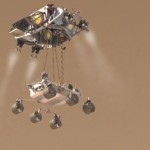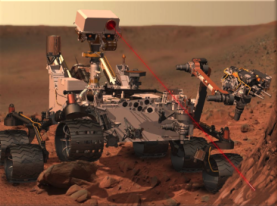
 JPL NASA is successfully applying MBSE to real project systems engineering problems across a wide landscape of project types, activities and lifecycle phases. Approximately 20 development tasks are applying MBSE at JPL across the full lifecycle. JPL’s Mission for NASA is Robotics space exploration in following areas: Mars, Solar system, Exoplanets, Astrophysics, Earth Science, and Interplanetary network. MBSE is used in the following missions:
JPL NASA is successfully applying MBSE to real project systems engineering problems across a wide landscape of project types, activities and lifecycle phases. Approximately 20 development tasks are applying MBSE at JPL across the full lifecycle. JPL’s Mission for NASA is Robotics space exploration in following areas: Mars, Solar system, Exoplanets, Astrophysics, Earth Science, and Interplanetary network. MBSE is used in the following missions:
- Mars 2020,
- Orion,
- DARPA,
- The Jupiter Europa Orbiter,
- Europa Clipper,
- The Soil Moisture Active Passive (SMAP),
- other.
The following comprehensive presentation from INCOSE International MBSE Workshop gives a overview of MBSE application status at JPL:
- Value of using MBSE,
- The JPL Product Life Cycle,
- Modeling infrastructure elements,
- Strategy,
- Path to apply MBSE,
- Motivations for using MBSE,
- Analysis methods,
- Other.
MBSE is used for:
- System model framework specification,
- Automated mass counting,
- Integrated power and energy analysis,
- Integrated data throughput analysis,
- Configuration-management,
- Fault protection design verification,
- Discrete event simulation,
- Advanced systems design and analysis.
Following motivations were identified for using MBSE:
- Strengthen the quality of formulation products by allowing exploration of more comprehensive options for space and more rapid analysis of alternatives
- Perform early validation of system designs
- Give systems engineers time to do more engineering analysis and less paper management
- Significantly improve the quality of communications and understanding among system and subsystem engineers
- Achieve greater design reuse
- Align with the expectations and work habits of the next generation of engineering talent
- This is the way new engineers are being trained and the way many of our early career engineers want to work
But the bottom line is to:
- Reduce the number of product and mission defects in the face of growing complexity
- And increase productivity and reduce costs
See the full presentation and what JPL MBSE practitioners say:
- “Europa team was able to study 3 distinct mission concepts for the resources usually sufficient to study only 1 or 2, and the high quality of all 3 studies was lauded by the Hubbard Review Board and by NASA HQ.”
- “Development of the initial system model … took a fraction of the time it would otherwise have, by reusing modeling patterns and analyses learned earlier on EHM.”
- “One thing that I’ve found is that the process of modeling leads to ‘escape discovery’. …capturing the details leads to a greater understanding of the system and makes errors or potential problem areas ‘pop out’.”
- “We are able to evaluate 100s-1000s of consistent, structured, and transparent design options and explicitly compare cost/benefit in a fraction of the time and cost of conventional methods.”
[slideshare id=40511628&doc=06-iw14-mbseworkshop-applicationofmbseatjplthroughthelifecycle-nichols-lin-final-141020162929-conversion-gate01]
Presentation “Integrated Model-Centric Engineering: The Application of MBSE at JPL Through the Life Cycle” was presented at INCOSE International MBSE Workshop January 26, 2014 by Dave Nichols and Chi Lin